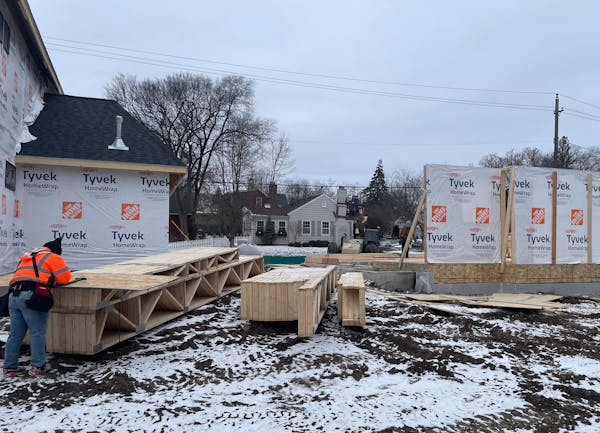Minnesota, like much of America, needs more places to live.
And Minnesotans, like most Americans, tend to be all for building new houses and apartments, except near them.
The most exciting thing happening in the Legislature this spring is a bill that bears right in on that tension — and comes down on the side of more.
If the bill passes — and that appears likely since it is picking up bipartisan support — your neighbors may decide to turn their house into a sixplex, or build a little cottage out back for their parents, and you won't be able to stop them. Neither will the planners or council people in your town.
Lawmakers on both sides of the aisle are putting the good of all Minnesotans and the state economy above the belief that local-knows-best when it comes to property and real estate.
I'm all for it for several reasons. Here is the main one: Minnesota needs to grow faster and we've got demographics and weather against us. We can't let one of our few competitive advantages, housing that's cheaper than on the coasts and in many other states, slip away.
The bills don't have a fancy name, though you can track them on the Legislature's website as HF 4009 and SF 3964. The first news accounts focused on their effects on affordable housing, the kind that gets subsidized and is aimed at lower-income workers and families.
That's partly because affordable-housing advocacy groups lined up a bunch of supporters to be at the Capitol for the first committee hearing on the topic Feb. 20. And it's partly because, as I wrote a few weeks ago, it's easy to be confused when talking about housing affordability and affordable housing, a term with a narrower meaning for policymakers and the real estate industry.
Minnesota is so far behind on home construction that policymakers think at least 100,000 units of all types are needed to bring the home market to a healthy equilibrium. That's about four years worth of construction at current rates.
The Legislature last year assigned $1 billion out of a $70 billion two-year budget to help pay for affordable housing units. The first $350 million of that will pay for about 4,300 units.
"Even at that level of investment, we're never going to get to the long-term challenge unless we address the underlying barriers," said Rep. Michael Howard, DFL-Richfield and chair of the Housing Finance and Policy Committee in the Minnesota House. "We're not going to use the resources as efficiently if we don't have a playing field where we can build the kinds of homes we need."
The bill essentially eliminates single-family zoning in Minnesota towns with a population above 10,000. It also takes away the ability of towns and cities to shape housing with rules about parking and aesthetics, or whether lots can be subdivided. Similar measures are passing around the country in hopes of making homeownership more accessible.
"For every $1,000 you add to the price of a home, you are pricing 4,000 people out of the market," Rep. Jim Nash, R-Waconia, said at the first hearing on the legislation. "That's a big ratio. We can fix that. This is a free market bill. It is a property-rights bill."
You may not see it that way, however, if your home's value is propped up by rules the bill eliminates. Still, places like Minneapolis and Richfield that liberalized zoning have experienced far less change than critics feared. I'm confident demand for homes is so strong that very few Minnesotans will see their property values eroded.
The bill will shift the balance of power on housing matters away from city councils and local planners. They are not happy about that.
"There are provisions in this bill that broadly pre-empt city zoning and land-use authorities, that remove public input in the residential development process," Daniel Lightfoot, a lobbyist with the League of Minnesota Cities, told me. "And it lacks consideration for how cities utilize zoning and land use to ensure health, safety, welfare and scale public infrastructure to support new density."
In places like California that have tried to legislate a greater opening in the housing market, some cities fought back by ignoring laws or imposing new restrictions. We can start a pool on which Twin Cities suburb will be the first to declare itself a wildlife sanctuary, as one in Silicon Valley did two years ago in an attempt to prevent duplex construction. (It didn't work.)
One alternative is to start merging the suburbs around the Twin Cities, as rural school districts have in the face of declining population. That will force bigger-picture thinking on them.
Either way, the status quo must change. Minnesota needs to grow, and the shortage of housing is one of several things holding back its economic potential.
After the first hearing on the bill, Ben Whalen, a member of the Richfield City Council that recently lifted some of its building restrictions, offered another reason why change is needed. "If we don't allow a home that a family can afford, we are telling them this place is not for you," he said.

Ramstad: Biden, Trump show how hard it is to let go of power, identity
Ramstad: In a chaotic moment, Americans still have power over what's next
Ramstad: In a big change to nation's corn, you might soon see shorter stalks

Ramstad: Human progress is not the enemy of the planet



